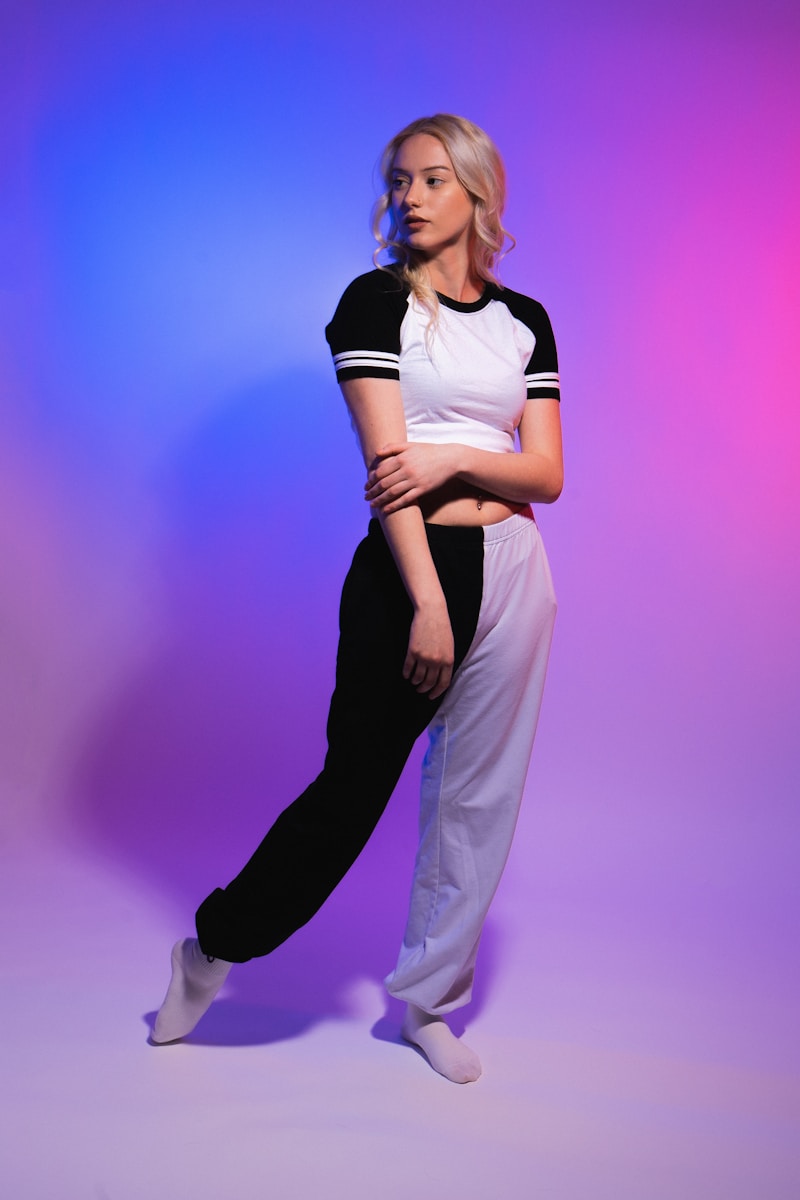Fashion has always been a conversation between self-expression and restraint, between the desire to stand out and the need for simplicity. Among the countless styles that have taken shape across the decades, monochrome dressing—building outfits around a single dominant color—has proven to be both timeless and refreshingly modern. While at first glance it might appear like the simplest approach to getting dressed, wearing one color head-to-toe actually requires nuance, confidence, and a keen eye for detail. When executed well, monochrome delivers a minimalist edge that feels polished, contemporary, and surprisingly powerful.
This essay explores the deeper philosophy behind monochrome style, practical strategies to wear it like a pro, and the reasons why its influence continues to dominate everything from streetwear to haute couture.
The Philosophy of Minimalism in Fashion
Minimalism in clothing has never been about deprivation—it is about discipline. The late 20th century saw the rise of designers like Jil Sander and Calvin Klein, who stripped away unnecessary ornamentation and presented garments that emphasized clean lines, precision, and purity of form. Monochrome dressing is a natural extension of this ethos. By limiting yourself to one color palette, you allow cut, texture, and silhouette to take center stage.
At its core, monochrome is not about hiding behind uniformity; it is about amplifying clarity. In a world overloaded with prints, logos, and clashing hues, stepping out in a seamless composition of white, black, navy, or even bold crimson offers a breath of visual relief. It says: “I’ve thought about this, and I know exactly what I want to project.”
Why Monochrome Works
Streamlined Sophistication
Monochrome creates a vertical, uninterrupted line that flatters nearly every body type. Wearing one color elongates the figure and reduces the visual noise of contrasting tones. This explains why head-to-toe black is considered the ultimate chic uniform—it’s sharp, slimming, and endlessly adaptable.
Effortless Versatility
Contrary to the belief that monochrome is limiting, the style opens endless possibilities. You can play with shades within the same family: cream with ivory, slate with charcoal, blush with rose. This gradient effect builds depth while still maintaining coherence.
Psychological Impact
Colors carry emotional weight. A navy monochrome outfit signals authority and calm, while an all-red ensemble radiates confidence and boldness. Dressing in a single hue intensifies that psychological signal, making the message even clearer to those around you.
The Subtle Power of Texture
One of the keys to elevating monochrome outfits is texture. Since the eye isn’t distracted by multiple colors, the surface qualities of fabrics gain prominence. Pairing matte with glossy, or smooth with rough, transforms an outfit from flat to multidimensional.
Wool + Silk: Imagine a tailored wool coat over a silk blouse in the same shade of camel. The contrast in texture prevents the outfit from appearing one-note.
Denim + Leather: Black denim with a supple black leather jacket creates a tactile interplay that feels both casual and edgy.
Knit + Satin: A chunky knit sweater worn over satin trousers in soft gray adds a layer of unexpected elegance.
Texture becomes your palette brush when color is uniform.
Layering: A Monochrome Secret Weapon
Layering within a single hue offers opportunities to highlight structure. Consider the following:
Tonal Play: A dove-gray trench coat over slate trousers creates subtle depth within the gray spectrum.
Shape Emphasis: Wearing the same color top and bottom draws attention to the silhouette, so experimenting with oversized tailoring or cropped proportions becomes easier without overwhelming the eye.
Accessories as Layers: Scarves, belts, and hats in the same shade can sharpen the final look without breaking the harmony.
Layering keeps monochrome from being predictable—it turns a simple base into a curated composition.
Accessorizing with Intent
Accessories can either disrupt or enhance monochrome dressing. The trick is to decide the role you want them to play.
Matching Accessories: Shoes and bags in the same color keep the look seamless. An all-white outfit with white sneakers and a white clutch becomes a statement in purity.
Contrasting Pop: A bold accessory can serve as a deliberate punctuation mark. Think of a crimson lip against an all-black ensemble, or gold jewelry layered over beige. The minimalism of the outfit allows the accessory to shine without seeming excessive.
Metal as Neutral: Silver, gold, or gunmetal accessories pair naturally with monochrome outfits, acting as subtle accents that don’t disturb the palette.
Common Pitfalls (and How to Avoid Them)
Monochrome is elegant, but it can also go wrong if treated carelessly.
Flatness: Wearing the exact same shade and texture top-to-bottom can look lazy rather than intentional. Solution: mix finishes and tones.
Over-accessorizing: Loading up on jewelry, belts, and patterned extras cancels out the minimalist purpose. Keep accessories restrained and intentional.
Color Mismatch: Not all blacks are created equal—faded black jeans with a deep black blazer may look unpolished. If mixing shades, make the difference noticeable enough to appear deliberate.
Awareness of these pitfalls is what separates a “thrown-together” look from professional monochrome mastery.
Monochrome Across Cultures
Interestingly, monochrome dressing is not a Western invention. Japanese fashion aesthetics, particularly influenced by Zen philosophy, have long celebrated simplicity and unity of color. Designers like Yohji Yamamoto and Rei Kawakubo elevated black as both a creative canvas and a symbol of rebellion against mainstream fashion.
In contrast, Indian culture often embraces monochrome through traditional wear: a sari in one bold hue or kurta-pajama sets unified in white or cream for ceremonial purposes. Monochrome, therefore, is not just a trend but a global language of visual expression that adapts to context and meaning.
Modern Interpretations
Today, monochrome dressing spans across fashion tribes:
Streetwear: Think of oversized hoodies, joggers, and sneakers all in the same muted palette of olive or sand. The look exudes nonchalance while maintaining structure.
Corporate Minimalism: A navy suit with matching shirt and tie feels commanding in boardrooms. It removes distraction and projects focus.
High Fashion: Runways continue to showcase avant-garde monochrome looks in bold neon greens or rich jewel tones, proving the style is endlessly malleable.
The digital era has also amplified monochrome. Influencers on Instagram and TikTok know the camera loves consistency; a single-color outfit reads cleanly on-screen, grabbing attention in crowded feeds.
Practical Tips to Wear Monochrome Like a Pro
Start Neutral: If you’re new, begin with black, white, or gray. These neutrals are forgiving and easy to pair.
Experiment with Bold Hues Later: Once comfortable, try head-to-toe emerald, cobalt, or burgundy. Bold monochrome is commanding but requires confidence.
Play with Silhouettes: Let proportion be the standout. Pair wide trousers with a fitted top, or a flowing maxi dress with structured outerwear.
Footwear Matters: Shoes can either blend (same color) or contrast (a deliberate shift). Don’t neglect their impact.
Confidence Is the Final Touch: More than color theory, it’s the way you carry monochrome that makes it impressive. Own the look unapologetically.
Why Monochrome Endures
Fashion is cyclical, yet monochrome endures because it adapts to changing cultural moods. In times of excess, it provides calm. In eras of restraint, it allows quiet luxury to shine. Today’s appetite for sustainable wardrobes also makes monochrome attractive—fewer colors mean more interchangeability and longevity in a closet.
Minimalism is not about stripping life of joy; it is about choosing joy deliberately. Monochrome clothing embodies that principle in tangible form: one color, infinite possibility



